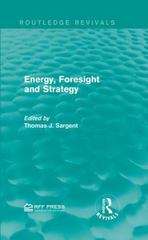Thank you, please answer the following questions, there is also the question of the need pictures please attach pictures
Some economists are arguing that the post-pandemic world will be characterized by signicant skill shortages in the labor marketcompanies will be demandingmore new digital skills that are yet to be acquired by the current labor force. [16 Points] 8) b) Using the twosided search model of unemployment covered in the course, graphically illustrate and discuss how such skills mismatch could affect output, unemployment, and the labor force participation rate. [5 Points] Based on your answer in part A, illustrate and discuss how the Beveridge curve might behave post-pandemic vs pre-pandemic. [3 Points] There is an ongoing economic and political debate on the timing and speed at which governments should start to reduce the extra unemployment benets introduced during the peak of the pandemic. In such a post-pandemic world illustrated in part A, discuss how maintaining high unemployment benets might affect your answers in parts A and B. [4 Points] Repeat the analysis in Part A using the one-sided search model of unemployment. Make sure to capture (graphically) and explain the effects of high unemployment benets and skills mismatch on the long-term unemployment rate. Make sure to carefully label your diagrams. [4 Points] 2. Assume that prior to the onset of the pandemic, the collateral constraint (based on value of housing asset) facing the representative Australian consumer was not binding. Then, suppose that the value of collateral falls due to the pandemic, all else equal. [16 Points] a) b) With the aid of a diagram, determine what the consumer's optimal response would be and explain, assuming the constraint does not bind even after the fall in housing prices during the pandemic. [4 Points] Suppose the collateral constraint facing the consumer at the onset was binding, how would the consumer's optimal response differ from your answer in part A? [2 Points] In addition to the binding housing collateral constraint in part B, suppose that the consumer's current taxes fall due to the pandemic-related tax cuts by the government, how does this affect the consumer's behavior? Explain with the aid of a diagram, assuming further that the government will increase taxes in the future. [5 Points] Suppose that housing prices rise following the removal of lock-down restrictions and the introduction of vaccines. Explain what the consumer's Optimal response would be when the collateral constraint is binding vs not binding. [5 Points]








